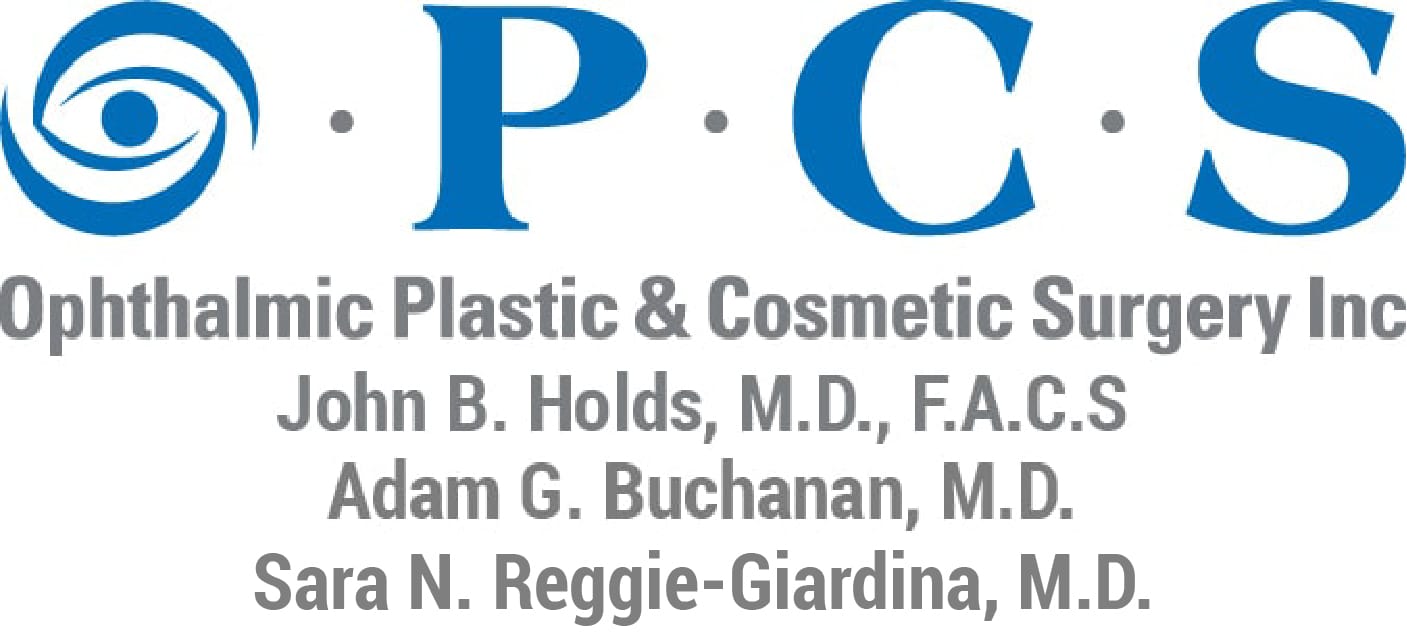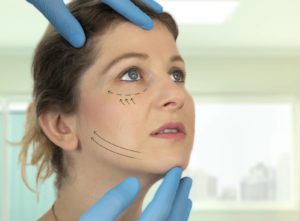Midface Lift in St. Louis, MO
What is a Midface Lift? 
A Midface Lift in St. Louis may be the perfect cosmetic procedure to restore your former youthfulness. It is one of your best options when the aging process causes sagging of the tissues of the middle of the face and around the cheekbones. If this sagging happens prematurely, it can even make you look older than you are. To improve your confidence and love the way you look again, having a midface lift could do wonders.
Contact Us Today For A Consultation
“I’ve been seeing Dr. Holds for 28 years by far the best doctor I’ve come across and would highly recommend him to anyone looking for eye surgery or plastic surgery.” -Rod
Benefits of Midface Lift
A Midface Lift is a surgery that can be so subtle that after you have fully healed, your friends may only say that you look younger and more rested. This cosmetic surgery is less invasive than a full facelift. What are the benefits of this procedure? A Midface Lift can:
- Elevate drooping skin around the cheeks and middle of the face, defining your cheeks.
- Restore the contour of sunken cheekbones.
- Reduce the hollow appearance between the top of your cheekbones and your lower eyelids.
- Reduce creases between the nose and mouth.
Am I a Candidate for a Mid-Facelift?
The mid-facelift procedure, also known as a cheek lift, allows experienced surgeons to address the signs of aging in a subtle, effective manner. Many people who choose to undergo this procedure, which focuses on the cheek and undereye area, as well as the nasolabial folds around the nose and mouth, are in their thirties and forties. Healthy individuals who do not smoke or are willing to quit for a short time can explore the option of a mid-facelift to correct hollowness beneath the eyes and heaviness in the mid to low face caused by the decline of fat pads in the cheek area.
It is important to be in good health for post-operative healing to go well. Patients who are happiest with their results also have realistic expectations of what can be achieved and a generally positive outlook as it relates to their appearance.
What to expect during you consultation
When you arrive at our office, you will need to provide a medical history. We need to know about any major illnesses or problems you have had, such as heart disease, hypertension, prior surgeries (especially facial surgery). In addition to previous medications or supplements that thin the blood. All over-the-counter pain/fever reducers (except Tylenol) and non-steroidal anti-inflammatory drugs (NSAID) are off-limits for a week before eyelid surgery, as are herbal medications such as Ginkgo Biloba, St. John’s Wort, fish oil, flaxseed oil, and vitamin E.
Our Physicians will ask you what bothers you the most about your face. He will discuss your surgical goals, talk about what is attainable, and create a plan to accomplish it. A mutual understanding of the goals, expectations, and outcomes is essential to a great result. An examination is then performed to look for any eye conditions such as a dry eye. This could limit or alter the surgical plan and be a possible post-operative concern.
As a board-certified ophthalmologist (eye surgeon), as well as an ophthalmic plastic surgeon, our team is attuned to eye diseases and concerns. Some of the best facial and cosmetic surgeons in the area regularly refer patients to him because of his expertise and ability to operate safely on patients who are at higher risk for complications.
Midface Lift Procedure
Mid-face lift procedures are performed on an outpatient basis. The patient may receive general or local anesthesia with sedation. Depending on the extent of tissue manipulation involved and the possible inclusion of additional lift techniques, a mid-face lift may take from one to three hours. A brief period is spent in the surgery center recovery room. The patient may be driven home by a loved one after they have regained a sufficient level of alertness.
During the mid-facelift procedure, incisions are made either inside the mouth, in the hairline, or at the lash line on the lower eyelid. The position of incisions is discussed during the consultation and reviewed just before surgery. Through the small incisions, tissue across the cheeks is lifted upward to reduce the appearance of heaviness and restore optimal contour.
Is Mid-Facelift safe?
Mid-face lift procedures are routinely performed today and, although not as extensive as a full facelift, considered a very real surgery. Treatment should be conducted only by a board-certified plastic surgeon who has completed specific training in this procedure. A skilled surgeon takes every possible measure to reduce the inherent risks of surgery, which include:
- Infection
- Blood or fluid accumulation under the skin
- Hair loss in the area of incisions
- Poor wound healing
- Nerve damage
What to expect during recovery
Patients experience some bruising and inflammation post-surgery, which may be noticeable for about two weeks. Although swelling can last a bit longer for some. Applying ice packs to swollen areas and elevating your head will help to reduce the inflammation and ease any discomfort. You can also take pain medication if you need it, which our team will discuss with you.
Dressings may be applied to the incision areas, but these are removed the next day. You must also return to our office after six to eight days in order to get your sutures removed. If chewing is uncomfortable for the first day or two, you may prefer to eat and drink only liquids, such as protein shakes and soups.
Most people can return after about a week. We advise all patients who have this procedure to refrain from strenuous exercise for at least a week, and it’s very important to always wear sunblock when outside, especially during the two months after your surgery. Since you will feel sleepy from the sedation, you must have someone drive you home after your surgery, but you can go home the same day.
Is Mid-Facelift Surgery Painful?
Patients are kept comfortable during their mid-facelift procedure. Pain is prevented through the use of either general anesthesia or a local anesthetic and sedation.
Are there side effects?
Patients can expect temporary bruising and swelling after a mid-face lift. The area under the eyes may feel either tender or numb for a short time. The cheeks may also feel somewhat numb when making facial expressions. The cheek pad may initially look overcorrected. However, as the tissue heals and swelling decreases, the fat pads settle into their intended position and the cheeks regain ideal contouring.
How Much Does a Mid-Facelift Cost?
The cost of a mid-face lift includes surgeon’s fees, anesthesia fees, and anesthesiologist fees, surgical center fees. The overall cost of care varies based on various factors, such as the type of anesthesia selected and the inclusion of additional procedures. During our consultation, we can outline the fees include to reach a final cost estimate.
Is a Mid-Facelift Covered by Insurance?
Cosmetic procedures like the mid-face lift are considered elective and are not covered by insurance. Patients may consider various financing options to assist with the repayment of surgical costs.
Comparison with Other Facial Procedures
Here’s how midface lift compares to other facial rejuvenation options:
- Full Facelift: A full facelift addresses signs of aging across the entire face and neck, making it suitable for individuals with advanced aging who need significant correction. Unlike the midface lift that concentrates on the cheeks and under-eyes, a full facelift can tighten the jawline, remove jowls, and smooth out neck wrinkles, offering a comprehensive solution.
- Mini Facelift: This procedure is often ideal for those who are beginning to see signs of aging in the lower face, including the jawline and nasolabial folds. It involves smaller incisions compared to a full facelift and has a shorter recovery time. A mini facelift is less invasive than a midface lift and focuses on tightening skin rather than repositioning deeper tissues.
- Non-surgical Alternatives:
- Fillers: Injectable fillers can add volume to the cheeks and reduce the appearance of nasolabial folds. They are non-invasive and require no downtime, making them a popular choice for patients seeking immediate improvements. However, fillers do not offer the lifting effect of a midface lift and typically last from 6 to 18 months.
- Botox: Primarily used to treat dynamic wrinkles caused by muscle movements, such as crow’s feet and forehead lines, Botox does not address the sagging or volume loss targeted by a midface lift. Its effects are also temporary, lasting about 3 to 6 months.
How Does Midface Lift Affect Facial Expressions?
Midface lift specifically targets the middle region of the face, enhancing the cheek area and reducing under-eye hollows. This procedure is meticulously designed to tighten and reposition only the soft tissues that have sagged due to aging, without tightening the underlying muscles that control facial expressions. When performed by our experienced surgeon, midface lift rejuvenates the face while preserving the natural mobility and expressions of the facial muscles. Patients typically find that their expressions remain lively and authentic, with the refreshed appearance contributing to a more youthful, rested look rather than altering how they express emotions.
Can Midface Lift Be Combined with Other Procedures?
Combining midface lift with other facial rejuvenation procedures can provide a more harmonious and comprehensive improvement to one’s appearance. Commonly paired procedures include:
- Eyelid Surgery (Blepharoplasty): This procedure can be done on the upper or lower eyelids to remove excess skin, reduce bagginess, and correct drooping lids. When combined with a midface lift, it enhances the rejuvenation effects around the eyes, providing a more alert and youthful appearance.
- Brow Lift: A brow lift corrects the sagging or descent of the forehead skin and repositions the eyebrows to a more youthful height. Pairing this with a midface lift can improve the overall look of the upper face, making it appear more open and refreshed.
- Laser Resurfacing: This technique improves the skin’s texture and treats minor facial flaws by removing layers of skin. When done in conjunction with a midface lift, it can enhance the skin’s overall radiance and smoothness.
- Fat Transfer: Adding volume through fat transfer involves taking fat from another part of the body and injecting it into the face. This can complement a midface lift by restoring lost volume to areas such as the cheeks and under-eye, further enhancing the youthful appearance.





